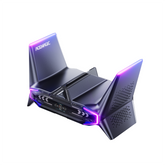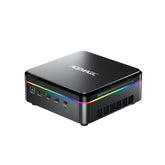How to Enter BIOS Setup on Windows PCs (Step-by-Step Guide)
What is BIOS (and UEFI)?
Before learning how to enter BIOS on Windows PCs, it helps to understand what BIOS and UEFI do.
The BIOS (Basic Input/Output System) is firmware stored on your computer's motherboard. It runs as soon as you power on the PC, checking hardware components, initializing them, and then passing control to your operating system. Modern computers often use UEFI (Unified Extensible Firmware Interface) instead of the traditional BIOS. UEFI offers a more advanced interface, faster boot times, larger storage support, and additional security features.
BIOS vs UEFI: Key Differences
| Feature | BIOS | UEFI |
|---|---|---|
| Storage support | Up to 2 TB drives (MBR partitioning) | Supports drives larger than 2 TB (GPT) |
| Interface | Text-based | Graphical, mouse-friendly |
| Boot speed | Slower | Faster |
| Security features | Basic | Secure Boot, advanced password protection |
| Update frequency | Rare | More frequent with newer hardware |
The Role of BIOS in Your PC's Startup Process
When you turn on your computer, the BIOS or UEFI performs the Power-On Self Test (POST) to verify that components like RAM, CPU, and storage devices are functioning correctly. After POST, it loads the bootloader from your primary storage device, starting the operating system.
This process is critical for system stability and security, making the BIOS/UEFI a key part of your PC's foundation.
Why You Might Need to Enter BIOS
Accessing BIOS on a Windows PC is not something you do every day, but there are situations where it becomes necessary. Knowing these scenarios helps you decide when it is worth going into BIOS setup.
Change Boot Order
If you need to install a new operating system or start your PC from a USB drive, you must change the boot order in BIOS. This tells the system which device to load first. For example, selecting a USB drive as the first option allows you to run installation media before the existing OS starts.
Enable or Disable Hardware
Some hardware features, such as unused RAM slots, integrated graphics, or USB ports, can be turned on or off in BIOS. This is useful for troubleshooting hardware conflicts or limiting device access for security reasons.
Configure Security Settings
BIOS settings often include options like setting an administrator password, enabling Secure Boot, or controlling TPM (Trusted Platform Module) features. These settings protect the system from unauthorized changes or malicious software during startup.
Update BIOS Firmware
Manufacturers occasionally release BIOS or UEFI updates to improve hardware compatibility, fix bugs, or add new features. Applying these updates can solve stability issues or enable support for new components.
Common scenarios include:
- Installing a new CPU that requires updated firmware
- Fixing boot-related errors
- Enhancing system performance through firmware optimizations
How to Enter BIOS on Windows PCs
There are several ways to enter BIOS on Windows 10 and Windows 11 computers. The right method depends on your PC's manufacturer, how quickly it boots, and whether your keyboard responds during startup.
Using Shortcut Keys During Startup
Most Windows PCs let you enter BIOS by pressing a specific key immediately after powering on.
- Turn off your PC completely.
- Press the power button, and as soon as the screen lights up, press the shortcut key repeatedly (such as F2, Del, or Esc).
- Keep pressing until the BIOS or UEFI interface appears.
Tip: Timing matters. If the OS logo appears, restart and try again sooner.

Accessing BIOS from Windows Settings
Windows 10 and Windows 11 allow you to restart directly into BIOS without relying on quick key presses.
- Open Settings.
- Go to Update & Security (Windows 10) or System > Recovery (Windows 11).
- Select Advanced startup and choose Restart now.
- On the blue menu, select Troubleshoot > Advanced options > UEFI Firmware Settings.
- Click Restart to load BIOS.

Using Command Prompt to Restart into BIOS
You can also use a single command:
- Search for Command Prompt and open it. Click the Start button, enter "cmd" in the search bar, and then select "Run as administrator."
- Type:
shutdown /r /fw /t 0 - Press Enter.
Your PC will restart and load directly into BIOS.

Differences Between Laptops and Desktops
| Aspect | Laptops | Desktops |
|---|---|---|
| Common keys | F2, Esc, F10, Del | Del, F2, F12 |
| Key timing | More sensitive due to fast boot | Slightly easier with longer POST |
| Access from OS | Same Windows Settings method applies | Same Windows Settings method applies |
| Manufacturer menu | Often includes extra battery and display options | Focuses on hardware expansion and cooling |
BIOS Shortcut Keys for Popular PC Brands
Different PC brands use different keys to access BIOS. Having this list handy saves time when you need to enter BIOS quickly.
| Brand | Common Shortcut Keys |
|---|---|
| Dell | F2, F12 |
| HP | Esc, F10 |
| Lenovo | F1, F2, Novo button |
| ASUS | Del, F2 |
| Acer | F2, Del |
| MSI | Del, F2 |
| ACEMAGIC | Del, F2, Esc |
| Others | Check manufacturer's support site or manual |
ACEMAGIC note: To access BIOS on an ACEMAGIC mini PC, restart the computer and press the designated key (usually Del, F2, or Esc) repeatedly as soon as the system powers on.
Troubleshooting: When You Can't Access BIOS
Sometimes the usual methods to enter BIOS do not work. This can happen due to fast boot settings, hardware issues, or keyboard problems. The following solutions can help.
Disable Fast Boot
Fast Boot shortens the startup process, which can make it harder to press the BIOS key in time.
- Open Windows Control Panel and go to Power Options.
- Click Choose what the power buttons do.
- Disable Turn on fast startup and save changes.
- Restart the PC and try the BIOS key again.
Use Windows Recovery Mode
If key presses fail, you can use recovery mode to force entry.
- Hold Shift and click Restart from the Start menu.
- On the blue menu, select Troubleshoot > Advanced options > UEFI Firmware Settings.
- Click Restart to enter BIOS.
Try External Keyboard
On some laptops or mini PCs, the built-in keyboard may not register keys early in the boot process. Connecting a USB keyboard can solve this issue.
Reset BIOS via Motherboard Jumper
If you cannot access BIOS due to a password or corrupted settings, you can reset it physically:
- Turn off the PC and unplug it from power.
- Open the case and locate the CMOS jumper on the motherboard.
- Follow the manual's instructions to reset settings to default.
Safety Tips Before Changing BIOS Settings
BIOS changes affect how your computer starts and operates. Adjust settings carefully to avoid system instability.
Backup Current BIOS Settings
Before making adjustments, note down the current configuration or take photos of each settings page. This makes it easier to revert if something goes wrong.
Avoid Unknown Options
Only change settings you understand. Disabling critical hardware controllers or altering voltage parameters can cause boot failures or hardware damage.
Update BIOS Carefully
BIOS updates should be done only when necessary, such as fixing compatibility issues or adding hardware support.
- Download updates from the official manufacturer's website.
- Follow the step-by-step update guide provided by the vendor.
- Do not power off the PC during the update process, as it may corrupt the firmware.
FAQ: Common Questions About Entering BIOS on Windows
How do I enter BIOS without restart?
You cannot fully access BIOS without restarting the PC, but you can schedule a restart into BIOS through Windows settings or the shutdown /r /fw /t 0 command.
Can I access BIOS from Windows 11 without keys?
Yes. Go to Settings > System > Recovery, select Restart now under Advanced startup, then choose UEFI Firmware Settings.
What is the F12 key used for in BIOS?
On many systems, F12 opens the boot menu, allowing you to choose a device to start from without changing BIOS settings.
Why won't my PC enter BIOS even with the right key?
Fast Boot may be skipping the key detection stage. Disabling it or using Windows Recovery Mode can help.
Is updating BIOS risky?
Updating BIOS carries some risk if interrupted. Follow the official instructions and avoid shutting down the PC during the process.
How to reset BIOS to defaults?
Most BIOS interfaces have a Load Defaults or Restore Factory Settings option. You can also reset it via the motherboard's CMOS jumper.
Can BIOS settings improve performance?
Certain settings, such as enabling XMP for RAM or adjusting fan profiles, can improve performance. Changes should be made carefully to avoid overheating or instability.
How do I know my BIOS version?
Press Windows + R, type msinfo32, and check the BIOS Version/Date field in the System Information window.
What happens if BIOS is corrupted?
A corrupted BIOS can prevent the PC from starting. Some motherboards have dual BIOS or recovery modes, but in severe cases, professional repair may be required.
How often should I update BIOS?
Update only when necessary—such as to fix bugs, improve hardware compatibility, or support new components. Frequent updates are not required for stable systems.






